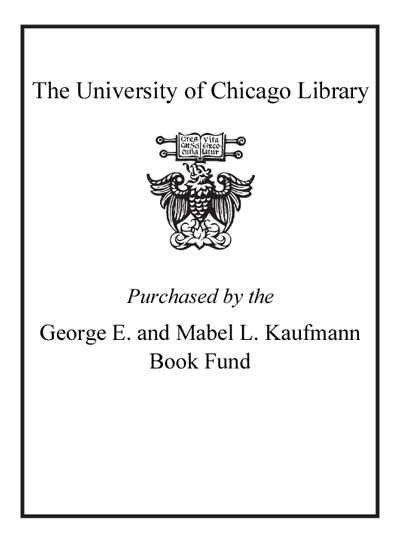Review by Choice Review
Readers will not be disappointed with the fourth edition of Harvard, long known as the essential single-volume music dictionary. Existing articles have been fine-tuned, and additions and deletions reflect new developments in musical scholarship as well as the changing world and its political boundaries. Revised bibliographies point to recent literature but do not cite larger standard reference works. Encyclopedia-length articles are signed and contrast with brief entries intended for quick reference. This edition includes entries for all the styles and forms in Western music; comprehensive articles on the music of Africa, Asia, Latin America, and the Near East; descriptions of instruments; and articles that reflect popular music, jazz, and rock. While entries for such topics as "Gender and music" or "Klezmer music" are relatively short, they add context to the volume. Like the previous edition (The New Harvard Dictionary of Music, ed. by Don Michael Randle, 1986), this one includes an impressive roster of contributors and a list of bibliographical abbreviations. It exceeds the earlier edition by some 40 pages, and its binding will withstand frequent use. ^BSumming Up: Highly recommended. General readers, music enthusiasts, and all libraries. K. A. Abromeit Oberlin College
Copyright American Library Association, used with permission.
Review by Booklist Review
Reverting to its original title, The Harvard Dictionary of Music0 continues under editor Randel as a revision of his 1986 The New Harvard Dictionary of Music0 , so named at that time to reflect its significantly expanded scope from previous editions. The focus remains "the tradition of Western art music," with greater attention to world and popular music. Dozens of contributing scholars are listed in the front matter and denoted by initials at the end of entries. Entries range from one or two words to multiple pages in length, defining or explicating terms for musical styles, instruments, performance marks, concepts, and works (e.g., Blues, Consonance and dissonance, Koto, Largo, Moonlight Sonata, Percussion instruments, Suzuki method0 ). Black-and-white illustrations identify instruments, and staves and other forms of notation aid understanding of concepts (e.g., Diminution, Mambo0 ). Many longer essays retain most of the text of the last edition, with brief updates to each section where appropriate. For example, England0 is enhanced by a listing of important British composers born in the twentieth century under the heading "History." Others have been substantially reworked or replaced (e.g., Electro-acoustic music0 ). Many short entries have been completely revamped to reflect greater cultural importance or changing use or understanding of the terms. For example, Reggae0 now emphasizes the influence of Bob Marley. The content occasionally seems a bit behind the times, omitting terms like MIDI0 and MP30 (though Compact 0 disc is a new entry) and failing to mention significant technological advances in Notation0 and Score0 that enable new approaches to both representation and reproduction of musical ideas. Brief bibliographies accompany many of the articles, and these have been updated even if there were few major changes to the entry. In comparison with other single-volume music references, such as the Oxford Companion to Music0 (2002) and Baker's Dictionary of Music0 (Gale, 1997), Harvard0 does not have biographical entries, is generally more scholarly in tone and content, and has many unique articles (e.g., Boston dip waltz,0 Ecphonetic0 notation, Lombard rhythm0 ). Recommended for any comprehensive music reference collection. -- RBB Copyright 2004 Booklist
From Booklist, Copyright (c) American Library Association. Used with permission.
Review by Library Journal Review
As the preface explains, this fourth edition of a classic music reference "proceed[s] directly from its [1986] predecessor," The New Harvard Dictionary of Music. Though coverage of non-Western and Western popular music has been expanded (and indeed these are probably the most significant changes), the core of the dictionary remains the Western classical tradition, and many articles remain nearly unchanged. Much of the article on Southeast Asia, for example, is the same as in the 1986 edition, including the illustrations (though other regional articles, such as Africa, have been rewritten). In the article for "leit motif," the Harvard Dictionary disagrees with Grove Music Online concerning the origin of the term (Grove Music Online claims an earlier use of the term); this article seems to be a verbatim holdover from 1986. The excellent coverage of regional and country-specific music has undergone some changes: the U.S.S.R. has given way to Russia, Baltic countries, etc. Articles on "Rock and Roll" and "Rock" are completely rewritten, and new articles include "Fiddling," "Rap," and "Turntablism." Unlike the Oxford Dictionary of Music, the Oxford Concise Dictionary of Music, Random House Encyclopedic Dictionary of Classical Music, or Baker's Dictionary of Music, the Harvard Dictionary almost completely eschews biography, though individual works (such as Verdi's Un Ballo in Maschera) are included. Almost every article longer than a paragraph is signed. Despite its relatively modest cost, the book itself is beautifully bound with fine-quality paper. Recommended for all libraries.-Bruce R. Schueneman, Texax A&M Univ. Lib., Kingsville (c) Copyright 2010. Library Journals LLC, a wholly owned subsidiary of Media Source, Inc. No redistribution permitted.
(c) Copyright Library Journals LLC, a wholly owned subsidiary of Media Source, Inc. No redistribution permitted.
Review by Choice Review
Review by Booklist Review
Review by Library Journal Review

